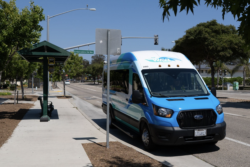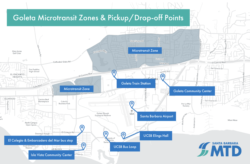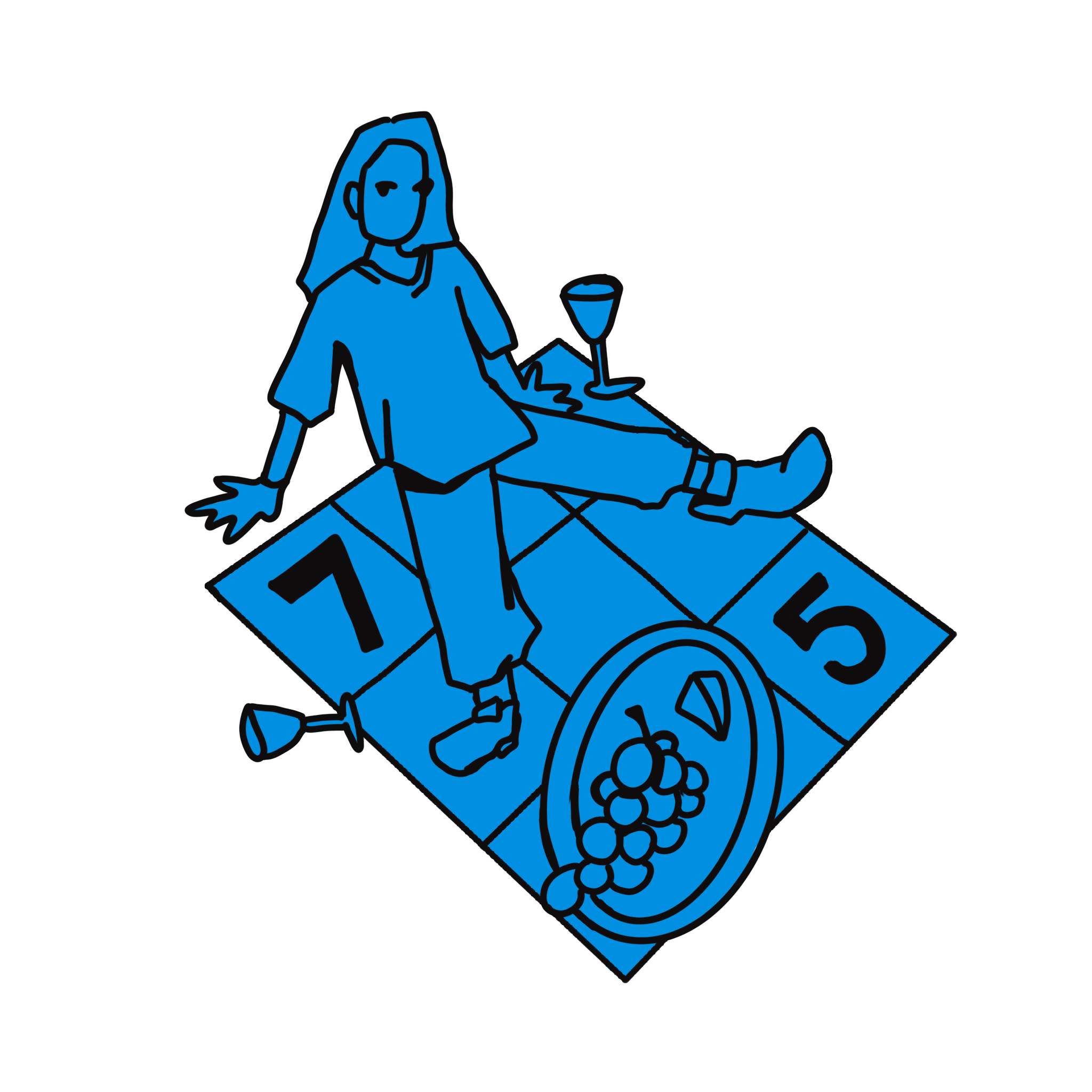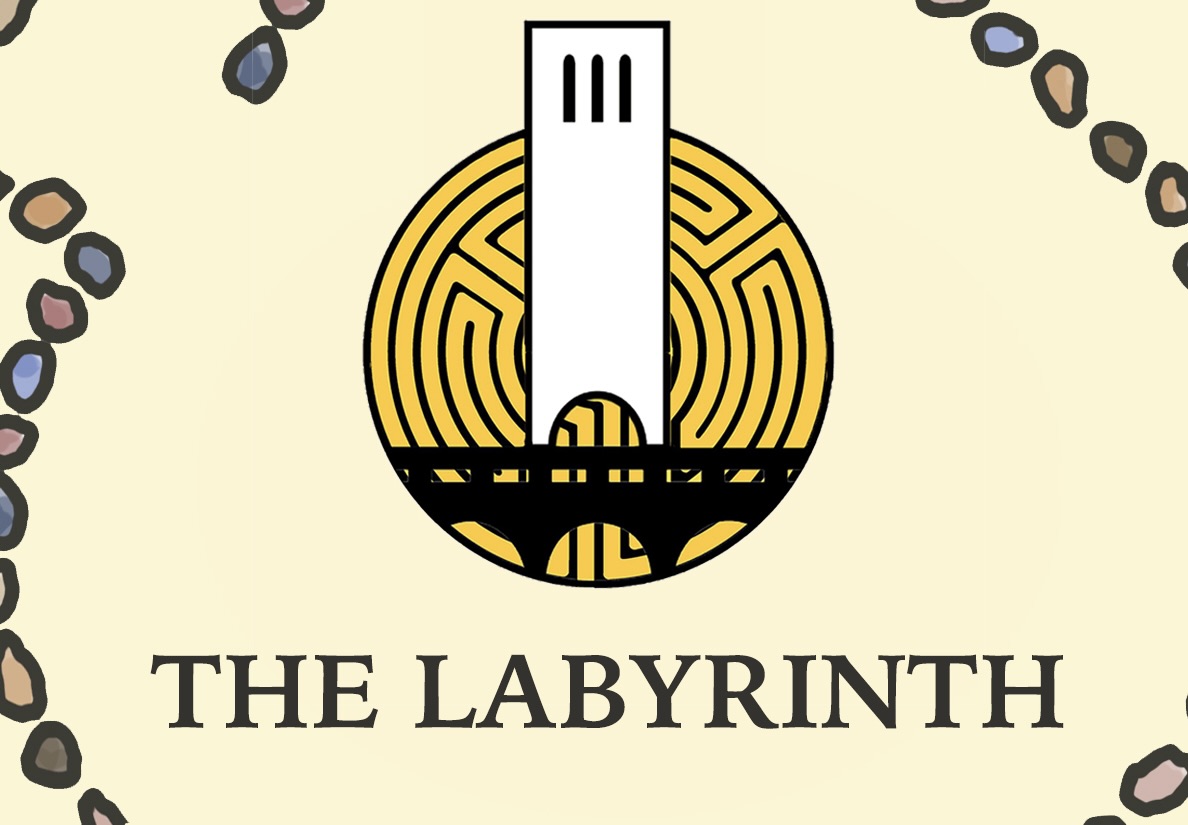
A “The Wave” van parking at the bus stop on El Colegio Road and Embarcadero del Mar, one of the pickup points for this microtransit service. Shengyu Zhang / Daily Nexus.
Disclosure: I rode on The Wave a total of four times without being charged a fare (the service is fare-free until mid-August). All bookings are done by my own volition.
The Santa Barbara Metropolitan Transit District’s The Wave is a new microtransit solution aimed at servicing certain areas in Goleta and points in Isla Vista and UC Santa Barbara. Similarly to a cab or Uber, a van picks you up (along with others that may travel in the same direction) and drops you off at a location of your choosing. With the backdrop of UCSB’s restriction on freshman parking permits and the increasing popularity of microtransit, I want to dig into the effectiveness of this offering: the experience, how it compares to other options and its place in the Santa Barbara area.
The experience of “catching” The Wave
In theory, after installing and creating an account on the TransLoc app, you can tap on the pickup and drop-off points or drag the pin anywhere within an area. You can also request a pickup time as soon as possible or up to a whole week in advance. After submitting a request, a van arrives, takes your fare and drops you off at your chosen location.
Seems simple! So how did it perform?
Based on my experience, after I have scheduled a trip, The Wave generally arrives with less than four minutes of delay from the scheduled pickup time and drops off within the estimated times shown on the TransLoc app. My experiences with requesting an immediate pickup varied heavily, and sometimes it took a while to be assigned a driver. The van is generally comfortable, the drivers are friendly and it serves well to get you from point A to point B within a reasonable manner. The van also includes a wheelchair lift and a small space for bags and luggage. Although the van has seating for up to seven passengers, I ended up riding alone most of the time.
It’s a service that I have found to work pretty well during use, but like all things in life, there are some caveats in place. The limited pickup and drop-off zones severely limit The Wave’s potential and applicability. The Camino Real Marketplace is a strange omission, and I.V. should also receive a microtransit zone that includes southwest I.V. (currently underserved with transit options). Additionally, the lack of Sunday and Monday service hinders its accessibility. Not to mention that the app is a little buggy and takes some time getting used to.

A map of “The Wave” service, showcasing “Microtransit Zones” and pickup and drop-off points, including the newly added Goleta Community Center stop. Courtesy of SBMTD.
What about the status quo?
For UCSB students who do not have a car, there are a couple of ways to get around the campus: by walking, biking, taking the bus or ordering an Uber. Although advertised as bicycle-friendly, those who frequent the UCSB campus should have the freedom to choose their method of transportation to travel anywhere around the area. These methods of transportation should be readily accessible and made with concern for each other’s use of time. The Wave can definitely help serve as an additional method for getting around the areas adjacent to campus, especially for traveling to northern Goleta. This area (which includes Trader Joe’s, for example) is very inconvenient to access without a car, and the train station would usually require an Uber or a 8 minute walk from the bus stop (with luggage, mind you). For those who can reach one of the pickup and drop-off points, I think The Wave serves its purpose quite well.
But there are some transit-related problems that The Wave cannot solve. Although we have an awesome bus network, it’s also imperfect. The biggest problem for students is a lack of bus capacity on the El Colegio Road corridor during rush hour. For that, you might want to ask the Santa Barbara Metropolitan Transit District (SBMTD) to run an extra few of those big, beautiful articulated buses on the 28 line instead of using The Wave to rein in the crowding.
The Ube(r)lephants in the room
I have a love-hate relationship with Uber: Getting a cab has never been so convenient, nor been so expensive. For example, booking an Uber from the Goleta train station to I.V. slims my wallet down by $22.98 (excluding tips). These high prices do not necessarily translate to better pay for drivers, either, who sometimes have to accept more than 50% of their fares being taken by Uber. The Wave’s general fare is a consistent $3.00 regardless of trip distance — just $0.50 more than the new single-ride fare on SBMTD buses, and also includes a free transfer to the bus within one hour. Additionally, in contrast to Uber’s contractor-based system, The Wave instead relies on a unionized workforce.
Uber is one of many cases of “enshittification”: that once companies gain a large footing in their respective markets, they tend to seek profit maximization by raising fees for customers while reducing compensation for suppliers — or in Uber’s case, doing so for riders and drivers respectively after holding 76% of the United States market hostage in 2024. This situation has been a major premise for my argument to improve our public transit, but it does struggle to serve low-density population zones like the suburbs. Until we can build more densely populated areas, microtransit will have to be our bridge for the time being.
With such a low fare on The Wave, the inevitable question does come up: How can its financial losses be justified? With expanded service and availability, students now have another alternative for getting around Goleta, and aren’t forced to take a car for these trips. In turn, The Wave can help alleviate I.V.’s notorious parking problem and the environmental effects of manufacturing cars as well. It can also offer another option for those who can’t afford to drive, especially if they struggle to afford an Uber.
There is a qualifier for my support of The Wave: SBMTD should not use microtransit to substitute or suspend bus services, like with SBMTD’s replacement of the 36 line with the upcoming The Wave service at Carpinteria. Microtransit should work in conjunction with a well-planned and growing bus network to alleviate the effects of suburbia, and only when both conditions are realized can the champagne be popped.
Frank would love to see some of those electric double-decker buses (known as the Enviro500EV) used by Foothill Transit be brought to the 28. But sadly, a man can only dream.





















Republitards hate public transpertation and these FoxNews watching rednecks would rather drive around all day in there gas guzzler SUV’s and macho man Dodge pickup trucks. They are morrons and they are against progress like the high speed train that will make are state carbon neutral. These MAGA people do not care about the environment and we must opposse them at every chance.